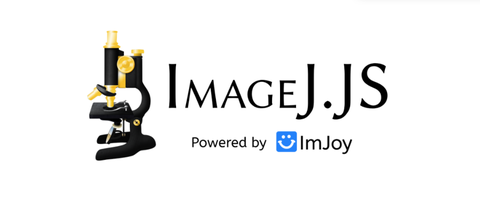

You can then let Ilastik train its segmenter on your input and get a probability map that you can process further in Fiji. You can set a portion of your data aside for training (a couple images should suffice), and annotate a couple fishes. trainable WEKA Segmenter), but I personally find Ilastik as a standalone program to be easier to work with. If all else fails you can jump right ahead to machine-learning for object recognition. With a bit of luck it will pick up the brightness gradient of the riverbed and remove it. It has always been, and continues to be, a project of Wayne Rasband, with the help of many contributors. The original ImageJ has been under continuous development since 1997.
Imagej help software#
You could try more advanced background reduction such as the built-in pseudo-flat-field correction ( see here, section 7.1.2). ImageJ is public domain software for processing and analyzing scientific images, with many derivatives and variants, including ImageJ2, Fiji, and others. However it might end up emphasizing other bright structures. This should help clean up small irregularitires. Try the built-in background reduction (Filters -> Subtract background) with a large radius, e.g. (I'm assuming that you want to count the dark long things and exclude everything else). Hm, sounds like a background reduction task. To solve this, hover your mouse over the lower right corner to bring up a double white arrow (Fig. Please contact the moderators of this subreddit if you have any questions or concerns. Screenshot of browser version imageJ, note OK button is no visible. I am a bot, and this action was performed automatically. If someday your work gets published, show it off here! That's one use of the "Research" post flair.

"Time is the most precious gift in our possession, for it is the most irrevocable." ~ DB Remember that "free help" costs those who help:Īside from Automoderator, those responding to you are real people, giving up some of their time to help you. Karma is a small way to say "thanks" and "this was helpful". Upvote those who contribute to the discussion. (See: xkcd 979)Ĭonsider saying "thank you" in comment replies to those who helped. People from the future may be stuck trying to answer the same question. If you figure out the answer for yourself, please post it! Never delete your post, even if it has not received a response.ĭon't switch over to PMs or email. Respond when helpful users ask follow-up questions, even if the answer is "I'm not sure". Image analysis is interdisciplinary, so the more general the terminology, the more people who might be able to help.īe thorough in outlining the question(s) that you are trying to answer.Ĭlearly explain what you are trying to learn, not just the method used, to avoid the XY problem. Good places to upload include:, , & Īvoid discipline-specific terminology ("jargon"). Screenshots (to help identify issues with tools or features) Reference Images (taken from published papers)Īnnotated Mock-ups (showing what features you are trying to measure) Images give everyone a chance to understand the problem.Įxample Images (what you want to analyze) Participants are invited to submit in advance an analysis problem/data of their interest that might be addressed in the course as an individual mini-project (with the help of the tutors).Notes on Quality Questions & Productive Participation Design of simple workflows for automation of image analysis with ImageJ macros. Working with multidimensional (2D, 3D, time-lapse, position) bioimages. This course is focused on the analysis of microscopy images but is targeted to all people engaged in research, that wants to start using ImageJ/Fiji for image analysis in general.Ĭontents: Principles, techniques and ethics of digital bioimage processing.
Imagej help how to#
With this course, we intend to give a general introduction to ImageJ/Fiji, show how to use it to extract quantitative data and how to write simple macros. Moreover, it also allows the automation of image analysis with custom macros and plugins. ImageJ/Fiji open source software( /) is a powerful tool available to process and analyze digital images. With the advent of the digital era, nowadays images are multidimensional numerical data that can be processed and analyzed quantitatively to extract more information.


 0 kommentar(er)
0 kommentar(er)
